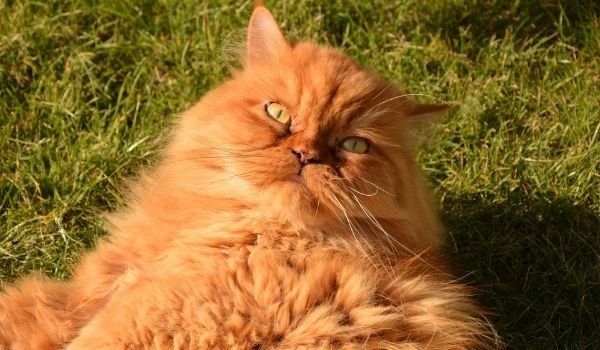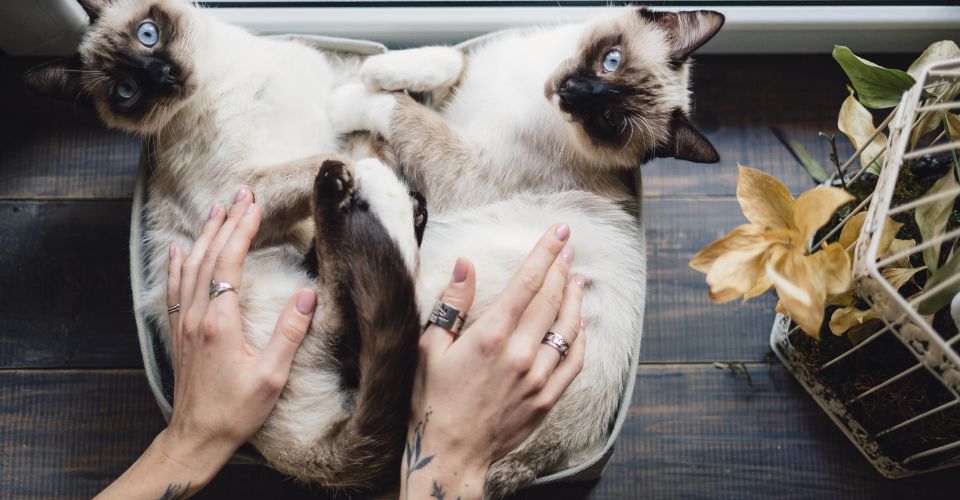From Milo, the lead character of The Adventures of Milo and Otis, to Garfield, an American comic strip, Orange tabby cats have been fascinating feline lovers for decades. Perhaps, these marmalade-colored cats have won your heart, and now you are curious to know what makes an orange tabby cat so charming. Is it their bright-colored coat or their warm personality? Or is it their lackadaisical nature and their warm snuggles and cuddles?
What is an Orange Tabby Cat?
The orange tabby cat is not a distinctive cat breed but rather a coat color pattern. They are a variant of tabby cats. It is the production of pheomelanin pigment that imparts an orange color to ginger tabby cats. All of the orange cat breeds that you see roaming around are orange tabby cats. They have a capital M marking on their heads.
Orange Tabby Cat Personality
Given that orange tabby cat is not a breed, one may think that they don’t have any common personality traits. While that is right to some extent, orange tabby cats are known for their affectionate nature. I can also vouch for the affectionate nature of orange tabbies from my personal experience with them.
In 2020, the spread of COVID-19 hobbled all activities, be it work or school. As suggested by healthcare providers, working at home became my daily routine during the first wave of the pandemic. An orange tabby cat from the house next door, whom my daughter later named “Fruity,” started swinging by our place almost daily.
He would meow for food while I exercised. The owner of the cat had passed away a few months ago. Fruity, a well-nourished and home-groomed cat, turned into a semi-stray cat and had to depart from his comfort zone to search for food like any other stray cat. Fruity would head butt against my legs and sit beside me. I took it upon myself to partly parent Fruity.
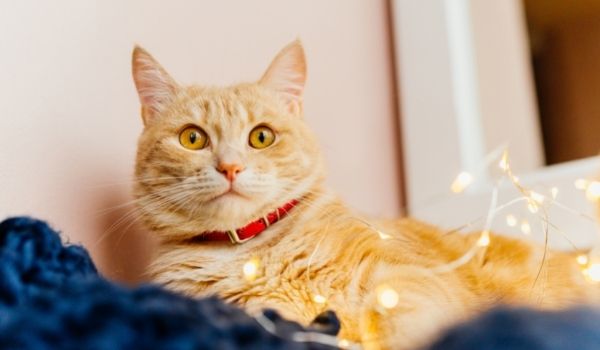
Due to his gregarious demeanor, he quickly became the object of my two daughters’ affection. So like other orange tabby cat parents, I can also say that these ginger cats are highly sociable and friendly creatures. They are also known for their laziness—you may find them basking in the sun or snoozing in their cat window perch, stalking birds at one moment, and napping the next moment. Fruity was no different from other orange tabbies.
Overall, orange tabby cats love to purr and meow to express themselves and convey their messages to their owners. Whether you are bewitched by their glowing, shimmering coats or beguiled by their affectionate and warm personality, there is something about orange tabby cats that makes feline lovers go crazy for them.
Below, we divulge a few fascinating facts about ginger tabby cats—you might not have known up until now.
Orange Tabby Cat Facts
It is hard to resist an orange tabby cat. Even if you are not a cat person, you may want to get yourself an orange tabby cat after reading the following fascinating facts about these adorable creatures.
1. 80% of the Orange Tabby Cats Are Male
People enchanted with the orange tabby cats often ask: Are orange tabby cats always male? If so, does that make female orange tabby cats rare? How rare?
These questions often pop up in orange tabby cat lovers’ minds because there are way too many male orange tabby cats as compared to female ginger cats. Only 1 in 5 orange tabby cats is a female orange tabby cat, which means that from the total orange tabby cat population globally, there are 80% males, and only 20% are females.
Female tabby cats are rare but not as rare as male calico cats—only 0.1% of male calico cats are from the entire calico cat population.
Now that you know female orange tabby cats are rare, you could be wondering: Why are female orange tabby cats rare?
Well, it all comes down to chromosomes. Female orange tabby kittens are produced when they get two orange genes—one from each parent—while male orange tabby kitten only needs one orange gene to have a charming orange coat. Therefore, there is a high probability of orange tabby kittens winding up males.
2. Orange Tabby Is A Brave Cat Breed
Fruity’s short sojourn with us testifies to this. He wouldn’t poke his nose in other cats’ business. However, Fruity would also not capitulate its space or food to a bully cat from the same neighborhood. Grey-joy, another stray yet friendly grey tabby cat, who grew up in my backyard, once got bitten by a bully cat, and a piece of coat came off from his skin. Other cats in the street would not stand up to that bully, but Fruity never lost its ground to the intruder.
His courage wasn’t limited to cats; if need be, he would stand up to dogs too. One night, Fruity leaped the wall guarded by the dogs to get his nightcap (milk). As the video below shows, he was courageous in the face of adversity.
That night, I discovered that the orange tabbies are no ordinary felines.
3. Orange Tabby Cat Is Not a Specific Cat Breed
As much as we want them to be a specific cat breed, they are not. It is just a coat pattern exhibited by many cat breeds. The orange tabby coat pattern is found in many cat breeds, including Abyssinian, Munchkin, Cornish Rex, Devon Rex, and Domestic Shorthair cats. Maine Coons and Persians also have an orange coats; they make for an adorable fluffy orange tabby cat.
4. All Orange Cats Are Tabby
Have you ever seen an orange cat with a plain coat, free of stripes, spots, or swirls?
No, we don’t think so. Because all orange cats are tabbies. However, the opposite is not true—not all tabby cats are orange. You can have tabby cats in many colors, with grey and brown being the most common.
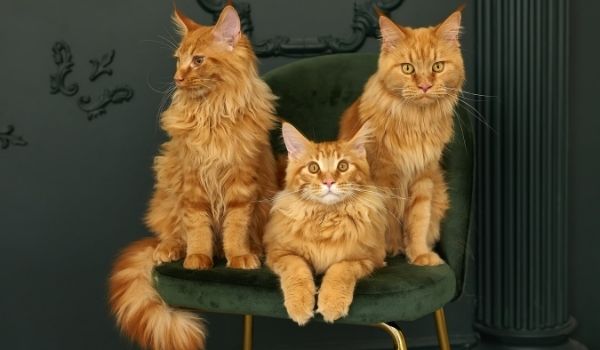
5. Every Orange Tabby Cat Has M Shaped Marking on Its Forehead

Hard to believe? Look it yourself. Take a look at our 10 Famous Orange Cat Breeds Around the World. You will find the elegant M-shaped marking on all orange cat breeds discussed in the article. This also proves the above fact that all orange cats are tabbies.
However, the M shape might fade on some tabby cats, making it hard to trace. But still, if you look closely, you will spot it.
How Tabby Cats Got the “M”?
While there are myths about how tabby cats got the M on their forehead, here is one of the most widely believed explanations for that elegant M carved on the foreheads of ginger kitties.
The “M” Shaped Mark is the Abbreviation of “Madonna” or “Mary”— Fact or Myth?
There is an explanation of the M-shaped marking on tabbies stemming from a biblical reference. They say that the M on any cat is the mark of Madonna (not the celebrity), a biblical reference to when Jesus was in the manger at the time. Baby Jesus was being fussy one night and would not go to sleep. A cat nearby saw this and began cleaning itself; once cleaned, it crawled into the manger and snuggled up to baby Jesus. Jesus went to sleep, and God saw fit to give the cat the mark of the Madonna for what the cat had done.
There is also another variation of the biblical reference. When baby Jesus was born, a kitty in the manger wanted to see Jesus. Jesus and Mary touched its forehead; thus, the mark of M was etched on the forehead, meaning the “Manger kitty.”
6. “Tabby” Comes from an Arabic Word “Attabiyah”
The term “tabby” refers to a cat coat pattern with distinctive stripes, dots, and swirling patterns. The word “tabby” comes from the Attabiyah neighborhood in Baghdad, Iraq, where the striped cat coat pattern was first observed and described. The coat pattern is thought to have originated in the Middle East and has been present in domestic cats for centuries. It is now found in cats all over the world and is one of the most common coat patterns in domestic cats.
7. Orange Tabby Cats Are the Most Affectionate Cats Out There
Experiencing the affectionate nature of orange tabby cats, many feline lovers wonder, “why are orange tabby cats so affectionate?”
It is not the color pattern of tabby cats that makes them highly affectionate cats but their upbringing and socialization at a young age. Having a happy childhood—full of positive interactions—orange tabby cats grow up to be highly affectionate cats.
Have you ever noticed that orange or otherwise, our cats are most affectionate in the morning?
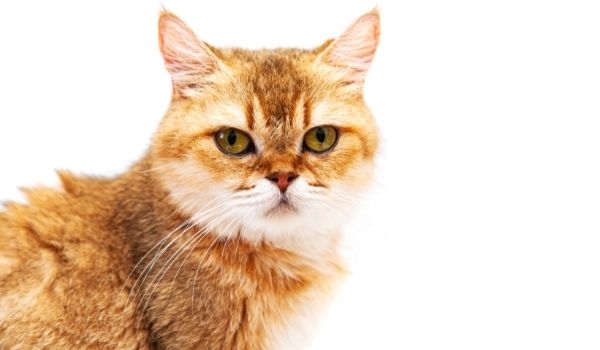
8. Orange Tabby Cats Are Vocal & Expressive: 10 Sounds They Can Make
Fruity was very vocal and would not stop meowing unless he got his meal. Like all other cats, orange tabby cats are patient with their meals. What sets them apart from other cats is their distinct ability to moan two different sounds depending upon the occasion.
Initially, Fruity would have a loud meow, which would dial down to a slightly more requesting tone, say about after 1 minute, when his first round of meows would fail to fetch him breakfast. That’s two sounds just yet.

Fruity would have other sounds of any ordinary cat. Some of them are listed below:
- Distress call
- Trill
- Mating calls
- Hissing and spitting
- Howl and yowl
- Snarl and growl
- Scream
- Chatter
9. Orange Tabby Cats Love Almond Milk
Although Fruity had a strong sense of perspicacity, he would completely lose sight of his surroundings and the associated perils when served with the warm milk. Even though most cats are lactose intolerant, a moderate quantity of milk—almond milk—diluted in water would do just about fine. That’s how exactly I served milk to Fruity in the morning.
Fruity loved his treat and would tumble down the rabbit hole until he realized that the tip of his tongue had just hit the bottom of the bowl. Usually, cats feel that they are in a vulnerable position when having food in the open and thus are wary of their surroundings. However, Fruity would be as carefree when having milk as would be Olaf, basking by the shore.
Disclaimer:
Most cats are lactose intolerant and should not be fed milk. In case your cat has developed a penchant for milk, you should feed her almond milk instead of dairy milk. It is also desirable to consult your vet; he or she would suggest the proper amount and forms your cat can consume milk in.
10. Orange Tabby Cats Love Food
They love their food. If they wake up in the dawn and their food bowl is empty, they will wake you up and won’t let you go back to sleep until you fill their bowl. Given their never-satiating drive for food, orange tabby cats are prone to growing overweight.
While a chubby orange tabby cat would look cute and all, it can lead to the development of several health issues. Therefore, you are advised to keep your orange tabby cat’s caloric intake in check.
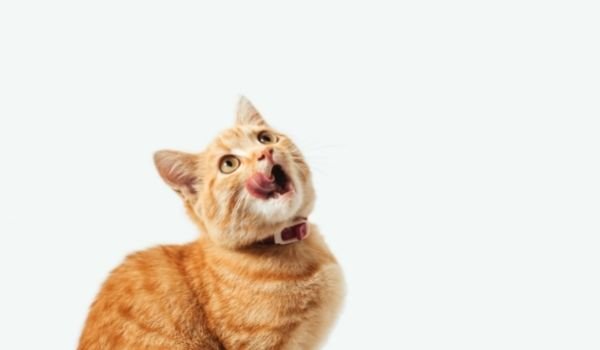

11. Orange Tabby Cats Have Many Patterns
There are four possible tabby patterns that an orange tabby cat may exhibit.
Tabby Cat Patterns
Mackerel: The mackerel tabby pattern is believed to be the most common and first tabby pattern to exist. A mackerel orange tabby cat would have stripes like a tiger running from top to bottom on his coat and ringed stripes on their tail.
Classic: Classic tabbies have swirls instead of defined stripes of spots. They feature a distinctive mark resembling a bullseye on each side of the body.
Spotted: These tabbies have spots instead of stripes, which could be large or small. Sometimes these spots may look like broken mackerel stripes.
Ticked: Ticked tabbies have neither a striped nor a spotted coat. Instead, they have classic stripes on the face and agouti hairs on the body.
12. Orange Tabbies Have the Same Pigment as Humans with Red Hair
People with red hair have a mutant genetic variant that produces pheomelanin pigment, which is responsible for their red hair. Similarly, orange tabby cats owe their orange-colored coats to the pheomelanin pigment.
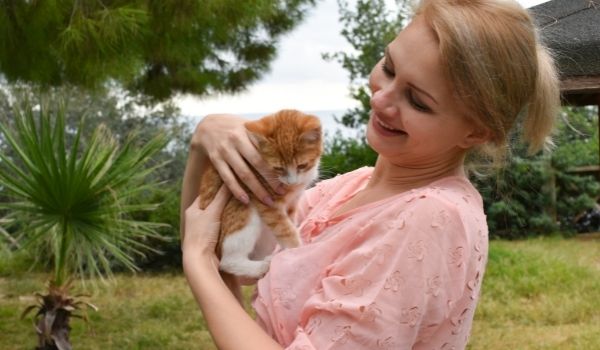
13. Orange Tabbies Are Laid-Back
Orange tabby cats have quite a reputation for their lackadaisical nature. They love to snooze away the day. Give them a comfy cat bed, or let them hop in your warm lap and take a nap, and they will be all yours. Their love for food and their lazy nature makes them more prone to obesity.

14. Orange Tabby Cats Are Quite Famous
They have been soaking up the limelight in the Hollywood world and have been to the UK parliament’s meetings. Yes, you read that right.
The former prime minister of the UK, Winston Churchill, owned an orange tabby cat. He was obsessed with orange cats, and it was declared that an orange tabby cat would always remain in his historic home.
15. An Orange Tabby Cat Can Have Three Eye Colors
Orange tabby cats always have one of the three eye colors—golden, green, or copper. These colors make our orange tabby cats look more attractive.
16. Orange Tabbies Often Develop Black Freckles
Orange tabby cats often develop black specks on their nose, cheeks, lips, and body, enhancing their beauty. There is nothing harmful about these freckles, but if epidermal melanocytes multiply, cats develop lentigo, which is cancerous.
Fruity – A Cherished Memory
Fruity, one of the kindest orange tabby cats I ever knew, passed away in September 2021. He was a senior cat and developed dental problems. Perhaps his dental complications explain his craving for almond milk. Fruity was a quintessential orange tabby cat—kind, loving, affectionate, foodie, expressive, laid back, M-marked, and the list goes on. Fruity still stands vivid in my and my children’s flurry of memories.
Orange Tabby Cat Names
Choosing the perfect name for your new orange tabby cat can be an exciting and fun process. Whether you’re looking for something cute, playful, or unique, there are plenty of options to consider. Here are some creative orange tabby cat names to get you started:
| Classic Names | Nature-Themed Names | Food and Drink Names | Pop Culture Names | Historical and Mythological Names |
|---|---|---|---|---|
| Oliver | Sunny | Caramel | Simba | Athena |
| Marmalade | Autumn | Butterscotch | Garfield | Phoenix |
| Amber | Maple | Peaches | Hobbes | Rusty |
| Ginger | Tiger | Tang | Tigger | Cleopatra |



